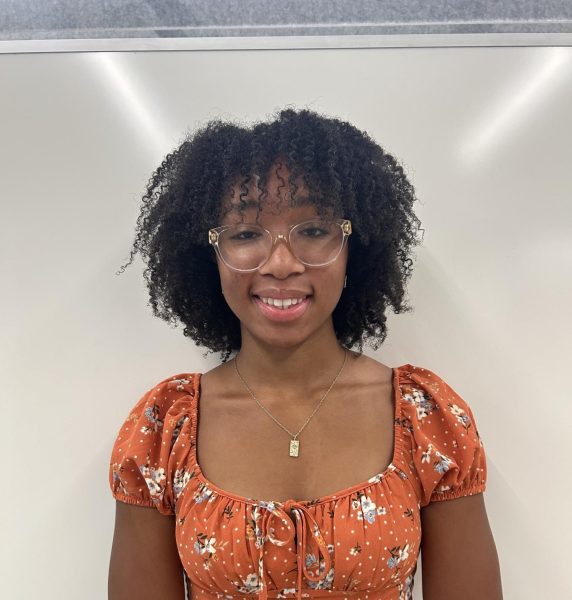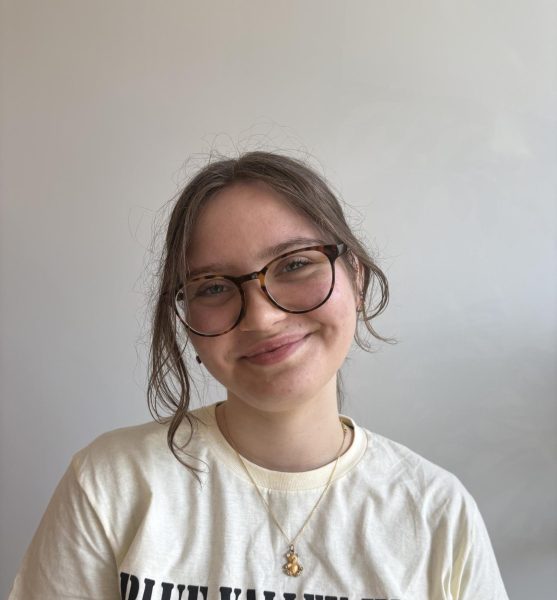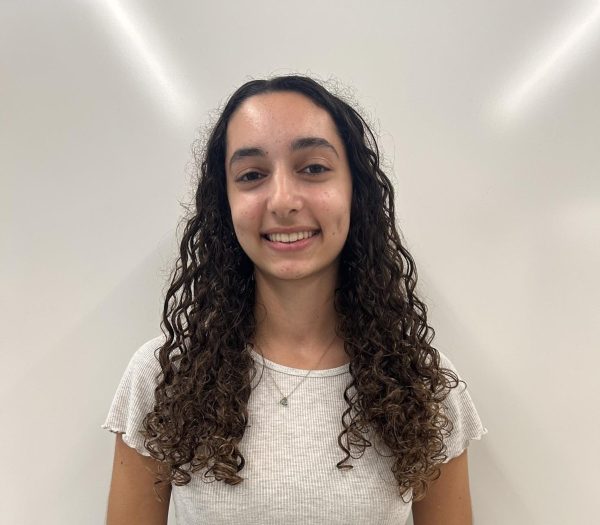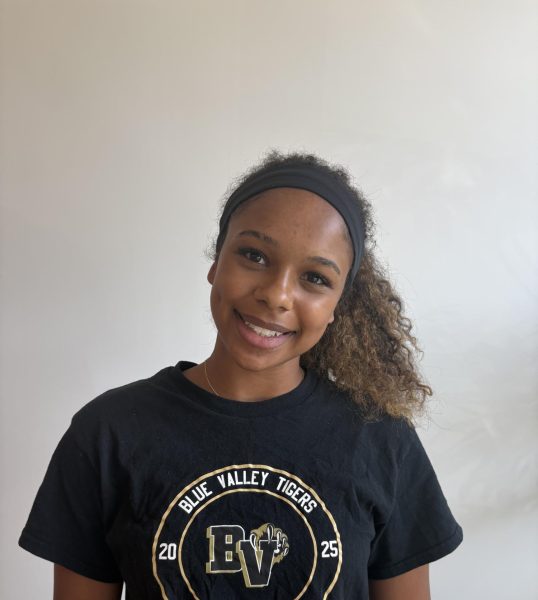In a post-COVID era students and staff are reaching their limits within the shrinking of the schools.
After the Pandemic
Schools have changed since the COVID-19 outbreak. Teachers such as Dianne O’Bryan believe post-COVID, it has taken a while for “kids to get back to school as usual — academic adjustment has taken time.”
The growth of the global population is declining faster than in previous years, and this can also be seen in the declining numbers in our school. In 2020, 1,604 students were enrolled, and now there are 1,428 students.
Statistics show people stay home significantly more. These numbers cross over to schools as well. The pandemic pushed many families to start homeschooling, and many stuck with it.
Some believed schools were implementing too few COVID precautions, and others believed there were too many. A number of parents were watching their children struggle with virtual learning and chose to take matters into their own hands with homeschooling.
Having experienced the benefits of homeschooling, many parents continued it after the quarantine. The percentage of American families home-schooling at least one child grew from 5.4% in spring 2020 to 11.1% in fall 2020, according to EducationWeek.
Although not directly related to the virus, after COVID, Blue Valley added another theater, gym and the new addition in the southeast corner of the building. However, some students feel as if they are cramped because of the limited spaces that are available.
Despite all the new additions to the school, students are restricted to limited areas making them feel like they are crammed and thus feeling overpopulated.
Junior Sarah Baker thinks the study rooms would be “more beneficial if they were unlocked” and possibly monitored instead of always having to be closed. She also believes classrooms are “overcrowded so it would be nice to have the study rooms again.”
O’Bryan also believes our school’s culture and traditions went away with COVID, but “we’re getting there” — BV is slowly returning to the strong traditions she remembers.
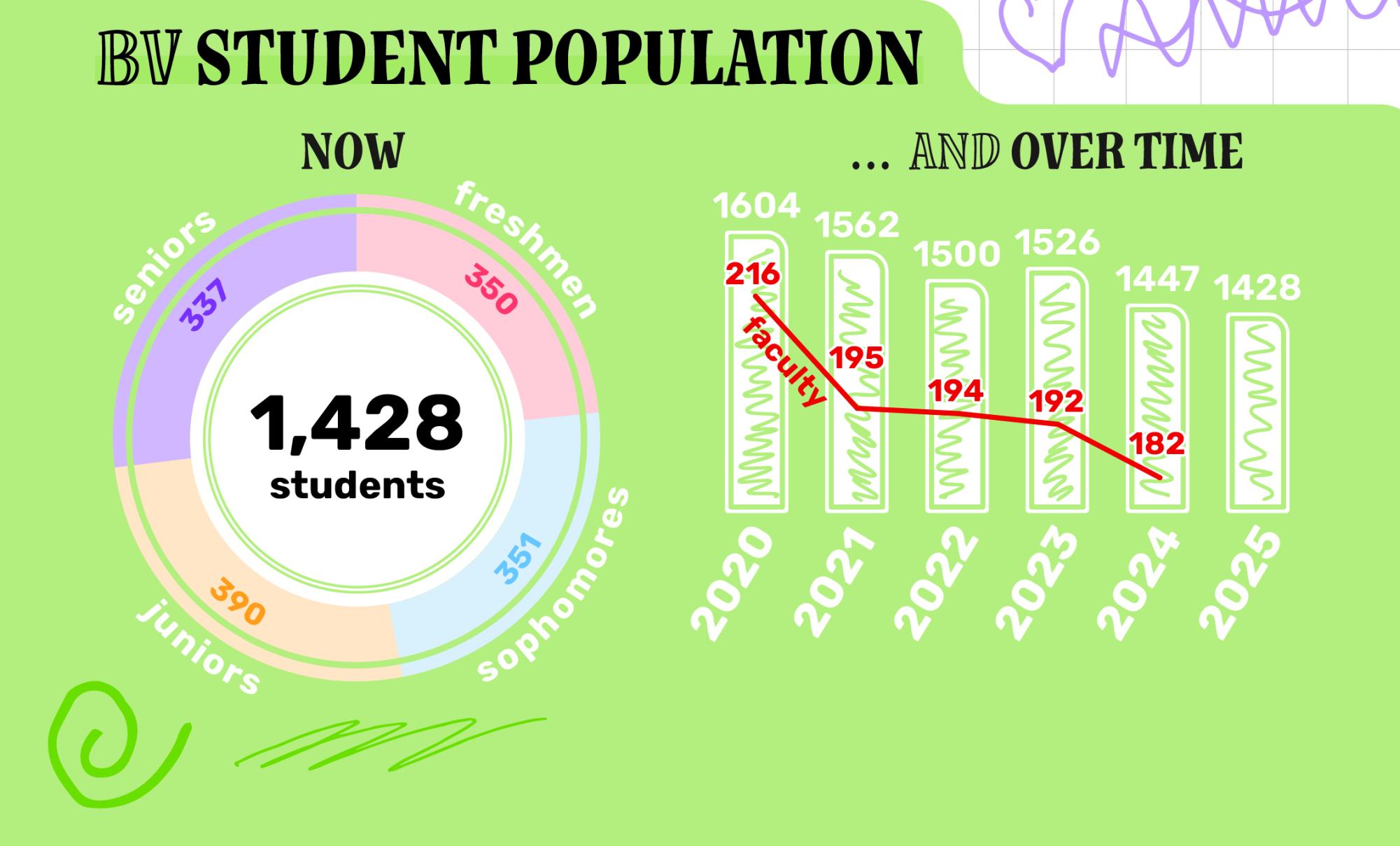
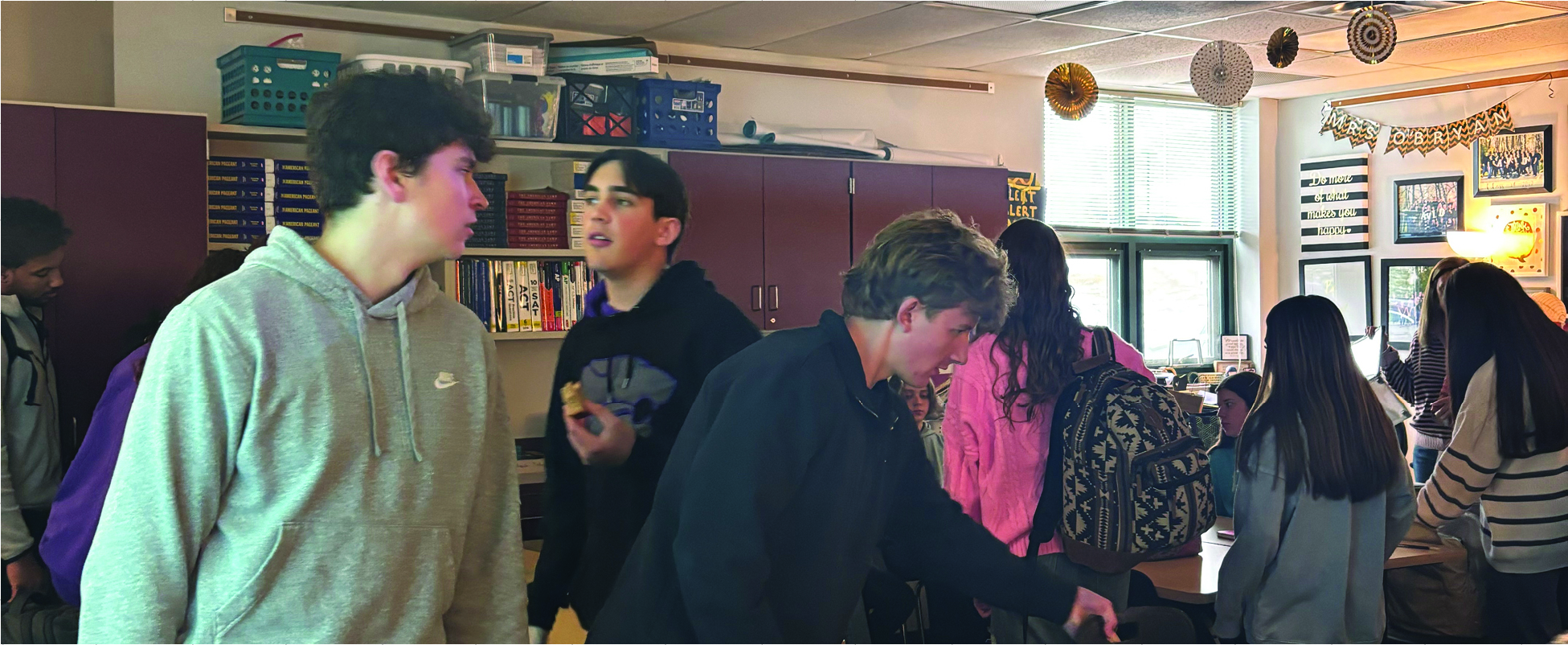
Finding a Compromise
Most students would say our school is overcrowded, with less room in the lunchroom and traffic jams in the hallways, but teachers have also been struggling.
Social Studies teacher Molly Cowan-Johnson is familiar with this hardship.
“We have 28 kids at least [per class] because that’s the cap,” Cowan said. “What we are seeing is the post-pandemic problem that students make it infinitely more difficult to help any of them when there are that many kids in class.”
The classroom environment is also more chaotic, leading to less learning.
“There are kids who can sit in any environment with chaos unfolding around you,” Cowan said. “I can watch one kid who, by themselves, would be fabulous [become distracted]. When you have that many distractions in a class, not only is it impacting the kid who’s doing the distractions but everyone around them.”
The overcrowded classroom sizes also lead to less one-on-one time with each student.
“A few years ago, I had a class of 18, which is unreasonable now,” Cowan said. “They were all doing amazing because I had time and they couldn’t hide. That is the biggest thing with classes that are stacked deep like that — there’s a lot of room for kids to hide.”
Teachers also no longer have a say in whether classes pass the cap or not.
“It used to be they had to ask us if they were going to go over the cap,” Cowan said. “Now we don’t know. They don’t even say, hey, this kid is moving. It’s just a surprise — there’s a new kid.”
Cowan thinks this problem is more than just school-wide and has more to do with the district.
“In our contract, we only teach five classes [and] we have a light duty hour, which, would be like a study hall coverage. There’s 38 people in there, and the only reason there’s that many in there is because they just expect a bunch of seniors to [leave], but most of them do not — that class is full.”
Cowan’s idea to fix the overflowing classrooms is to spread it out.
“If they were to take my three modern world classes and spread them over four and I teach that extra hour, but I don’t have more kids, I would be fine with that,” Cowan said. “I feel like that’s a good compromise. We’re going to stretch it out because that makes it better for me. It makes it better for the kids, and it’s not increasing the amount of students we’re responsible for.”
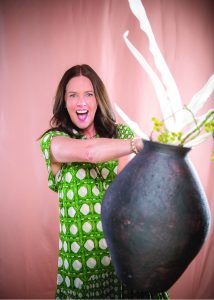
Side Quests
From creating lesson plans for a classroom that has a variety of types of learners to trying to grade 100 papers before the weekend, it’s no secret that teaching is a difficult job. Time management is not only essential for students, but teachers too.
Some are even juggling multiple careers. AVID teacher Mackenzie McDonald navigates multiple jobs, as she is a real estate agent and fitness instructor outside of the classroom. Although three professions would be overwhelming to some, McDonald finds it easy since they are each at different times of day.
“I teach in the mornings three days a week, and that leaves plenty of time for real estate in the evenings and weekends,” she said. “Teaching fitness classes just fits in whenever I can and helps me prioritize my own health at the same time.”
The most challenging part for McDonald is that real estate is not on a set schedule.
“My clients may need to go see a house right away, which makes it a bit harder to plan my routine,” she said.
Despite the many trials of having several jobs, she enjoys interacting with people for each one.
“I love working with my students, I love helping someone find their dream home, and I love working out and pushing people to be the best versions of themselves,” she said.
Psychology teacher Courtney Buffington is also managing her busy schedule since she is an interior designer and mom outside of school.
“I lose my mind, but also it’s easier because I only have one child at home now, [so] I’m not driving any kids around,” she said. “Being a mom to younger kids is a full time job, and that’s a lot easier for me now that my kids are older.”
Buffington discovered her passion for interior design as a kid herself.
“I was 8 years old drawing furniture on floor plans; everything I would draw would be living rooms, kitchens and families — I was a weirdo from the start,” she said. “It’s nice to have some solitude because it’s so much human interaction at school.”
In college, she decided to go the teaching route because interior architecture felt isolating.
“I realized I wanted a job where I was working with people more, and architecture studio is really intense; I just looked around one night and was like ‘this is not for me,’” Buffington said. “So then I went with my other passion.”
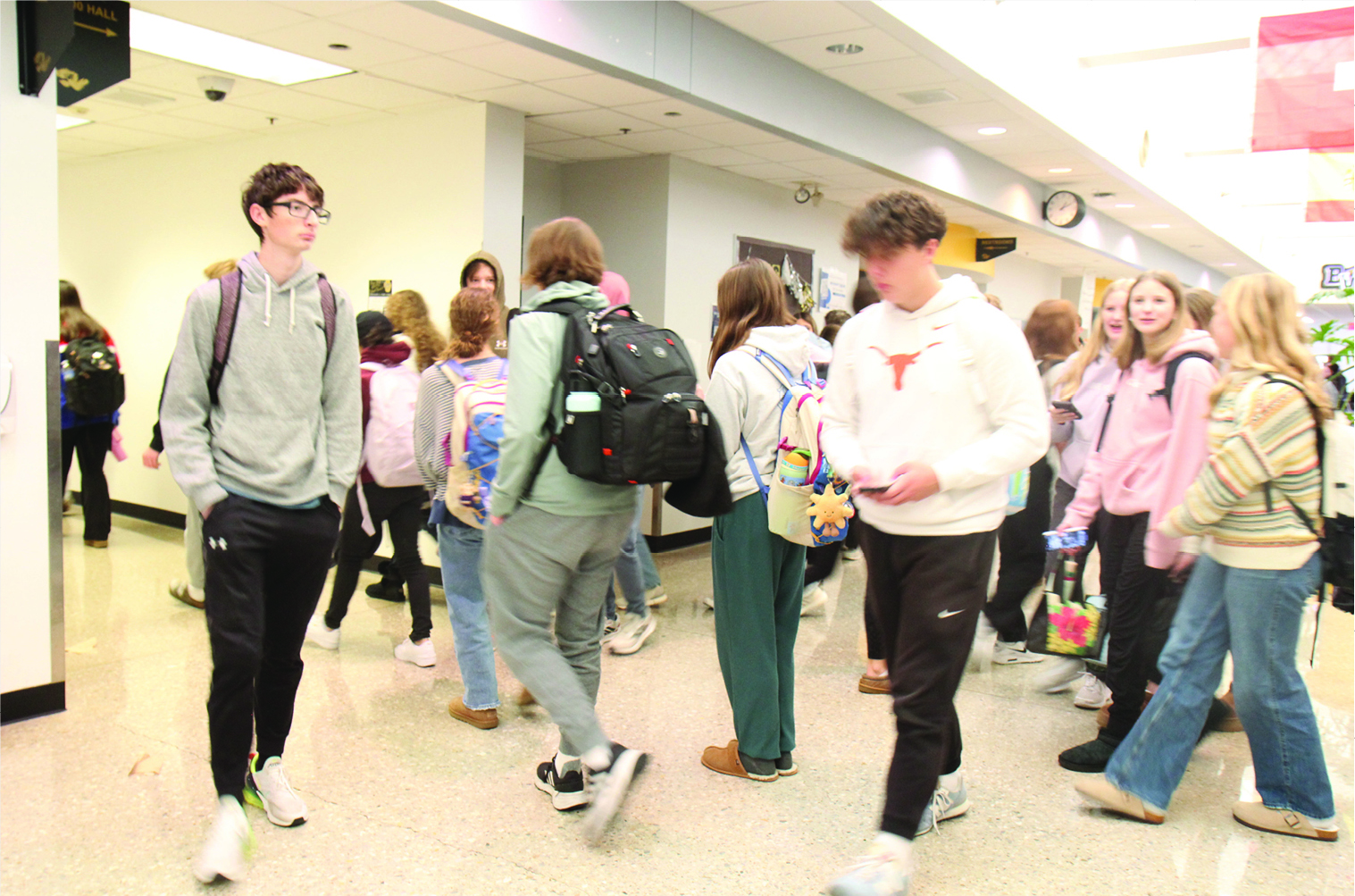
Limiting Class Size
The most sought-after school in the district that has a successful football program are things that attract people to transfer to Blue Valley. However, some students don’t appreciate the high transfer rate and think the rooms are overpopulated.
“I feel like in my math class, I have way too many people,” junior Ben Compton said. “I feel like there’s way too many juniors.”
Sophomore Caleigh Richardson also agreed there are many juniors, and the number of people is increasing rapidly.
“There’s a lot of people,” Richardson said. “I think a lot of the classrooms are too small for the teachers to be able to teach.”
Other students express their dislike and discomfort being in a class with loud students and how these things take from their experiences.
“The classrooms are so condensed — we aren’t able to actually listen to the teacher talk,” junior Noor Sarwar said. “The [student]-to-teacher ratio is off.”
Richardson said the teachers don’t get the respect they deserve and that there should be more teachers or fewer students.
“I feel like some teachers, especially in our day and age, they’ll be like, ‘Hey, everybody be quiet,’ and nobody’s quiet,” Richardson said. “No one will listen and it’s just crazy.”
All three students said there should be some sort of revisions to the class limits and the number of classrooms for learning comfort.
“Construction might not be the best idea but we might have to make some new classrooms,” Compton said. “There’s already classrooms that have two teachers in them.”
Sarwar added her perspective, too.
“Instead of having the classes super full, they should just have a certain [maximum] for classes and not have any extra people,” she said.
In the end, students believe overpopulation is real and should be managed.
“There should be fewer kids in classrooms because it’s a better learning experience for kids,” Richardson said. “Overpopulation is crazy.”





